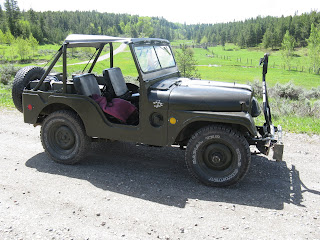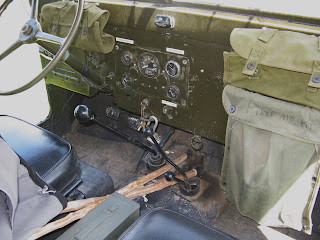We tried three times to get down into Sheep Falls on the Falls River. First we were stopped by snow on the road, next we were stopped by mud and the third time we were stopped by a steep rocky drop that I thought might be too much for the old Jeep. Without another rescue vehicle along and no winch to help us climb back out we decided not to take the risk. We're going back next year with at least two Jeeps. Any volunteers?
The long muddy hole that stopped us from getting down into Sheep Falls on the second try.
Here's a pic of Sheep Falls on the Falls River I found on the internet.
Robinson Creek. We crossed here a number of times during the Tour to get to or from the places we visited. In the winter, this bridge gets us to some outstanding snowmobiling areas.
We helped unload some cows onto summer pasture along Conant Creek.
The Tetons as seen over the railing at the corral.
Our Little Wrangler giving instructions to the cows.
We saw many old buildings from the early days of settlement in this area. The hard working people who developed this area must have been some hearty folks!
An old building in the town of Drummond.
We fed two young horses being kept in a separate corral from the rest of the herd.
Horseshoe Lake along the western boundary of YNP. We didn't get to spend as much time here as we would have liked. Definitely going back next year.
Johnny Sack Cabin at Big Springs in Island Park. Stopped here on our way to lunch at the Old Faithful Inn.


















































